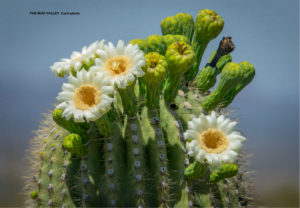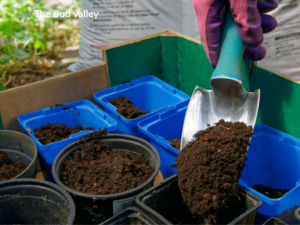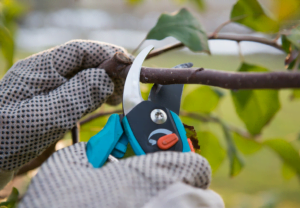
There are thousands of different kinds of cacti around the globe, did you know that? Out of these, only two species can be kept indoors and live for a long time with little maintenance. These plants are quite sturdy and can survive for years. I have been growing 10 to 15 cacti plants in my house since 2016, and they are doing great. Based on my experience, I will share with you all the detailed information about these plants in this blog. Nowadays, the most common types of cacti are small to medium-sized ones since they are low-maintenance and long-lasting in your yard or house. They are also relatively inexpensive and in high demand. One of the most popular ornamental cacti is the Christmas cactus, which is native to Brazil and produces red, pink, purple, and yellow flowers. I hope you find this information helpful in understanding more about these fascinating plants.
| Common Name | Cactus |
| Botanical Name | Cactaceae |
| Family | Cactaceae |
| Plant Type | Succulent, Perennial |
| Mature Size | 1-6 feet tall and 2–30 feet wide, depending on the species and cultivar |
| Sun Exposure | Full Sun |
| Soil Type | Well-drained Sandy |
| Flower Colour | Orange, pink, red, yellow, white |
| Bloom Time | summer |
| Hardiness Zones | 9 to 11 |
| Native Area | North America, South America |
| Soil pH | Neutral, Acidic |

I noted earlier in this blog that cacti are low-maintenance plants that can be grown and maintained successfully at home with a little care. Even yet, there are a few crucial guidelines that must be adhered to with this plant. For example, it’s crucial to water the cactus frequently, plant it in the area of your home that receives the most sunlight, and keep an eye out for fungal invasions. If there is ever a fungal attack on the plant, quick action must be taken. Additionally, it’s important to monitor the amount of nutrients in the soil of the plant. If the amount of food in the plant is reduced, it must be fertilized, and dead branches or leaves must be pruned. All these factors need to be observed, and below, I will show you how to complete each of these tasks step by step.
Light

Every plant, including cactus plants, which need lots of sunlight, depends on sunlight to thrive for any length of time. Cactus plants require four to six hours of sunlight each day, so make sure they are kept in a bright area at all times. But exercise caution—this plant may not tolerate intense sunshine. Try to locate the cactus in indirect sunlight throughout the summer, such as next to a window, so that it receives some indirect light but not direct sunlight. On the other hand, it will be advantageous to expose the plant to direct sunlight from dawn to noon during the winter. It is crucial to remember that although this plant needs sunshine, too much sun can harm it. You can keep your plant outside if you wish to give it enough light, but only if the nightly low in your house is 50 degrees Fahrenheit or higher.
Soil

Growing this plant does not pose much of a problem for soil selection, as the species that grow in the desert, i.e., if you want to grow desert species indoors, flourish in standard potting soil that has been enhanced in aeration with sand, gravel, or perlite. However, any type of soil will work just well if you want to grow a normal woman of the forest in your house. But this plant grows quite well in well-draining soil if that’s your preference.
Water

I don’t think there is a plant in this world that doesn’t need water, so this plant needs water. But first, you need to be aware of how much water this plant uses. Water this plant once every 10 days during spring and summer when the cactus is actively growing. Care should be taken to ensure good drainage after watering the plants. This plant should be watered less in winter because overwatering in winter can cause root rot and damage the plant. It is therefore sufficient to water this plant once every four weeks during the winter.. You have to check the plant’s roots by hand; if the soil becomes dry, then water should be given. If the soil is soft, indicating water exists in the soil, then definitely do not give water.
Temperature

Usually, one of the two species we grow in our home, or both, are desert-grown and forest-grown cacti. In the desert, the species tolerates temperatures as high as 70 to 80 degrees F. This plant can tolerate temperatures as low as 35 degrees Fahrenheit throughout the winter, however, it prefers to stay around 55 degrees. Forest cacti differ slightly from desert varieties in that they prefer slightly more humid conditions. Therefore, spritz your succulent plant occasionally if you see that it is drying out every day.
Fertilizing

Fertilizing is very beneficial for the plant because when it is fertilized, the plant experiences normal growth, and brightness, and does not lack nutrients. Care must be taken while applying fertilizer to avoid over-fertilization, which is beneficial for the cactus plant. Fertilizers contain phosphorous, so caution must be exercised when selecting fertilizers for this plant. The nitrogen content of the fertilizer must be high, and it is ideal to fertilize the plants two to three times a year. Of course, reducing the amount of fertilizer in the winter will be more beneficial for the plant.
Pruning

Cactus plants generally do not need pruning unless you are trying to control their growth. However, any dead or damaged leaves and stems can be pruned with sharp shears, which will greatly benefit the plant.
It’s a satisfying experience to grow cacti from seed indoors, and it’s a terrific way to bring some greenery into your house. Using my own experience as a guide, I’ll effectively walk you through the process of producing indoor cacti from seed in this extensive guide.
Understanding Cactus Seed Basics

Be careful, cactus seeds are very small and delicate, requiring special care during their growth. In this blog, I will discuss the different characteristics of successful breeding practices and what considerations you must carefully think about.
Benefits of growing cactus indoors from seed
Good seeds are easy to breed from, but cacti may be propagated extremely nicely from seed, which is not widely available.
Tools and supplies needed for indoor cactus seed propagation
If you’re thinking about propagating plants inside from seed, you should know that I’ll go over all the requirements in this blog, such as the right kind of growing media, light, air supply, and other important elements.. Cacti play an important role in germination and development.
Choosing the right cactus seeds
It’s important to conduct research and take your preferred bloom type into account when choosing cactus plant seeds. Researching several cactus plant types in-depth is essential in advance, since you should choose your cactus plant according to your tastes. What kind of cactus do you like?
Selection of seeds based on climate and light conditions
You need to think about your physical surroundings because different kinds of cacti can grow successfully in areas where they can withstand sunshine. However, some plants are sensitive to direct sunlight, which can damage them and cause them to die. Therefore, depending on the climate and environment of your home, you should carefully select and care for the plant. Assessing the suitability of the plant for your home environment is essential.
Purchase high-quality seeds from reputable sources
To guarantee a healthy plant, it’s essential to choose superior seeds while gathering cactus plant seeds. Thus, take sure to inspect the quality of the seeds you choose. Choose and buy these seeds if you think they will yield positive outcomes.
Choosing the right container for seed germination
Proper container location and enough drainage are necessary for the germination of cactus seeds. Maintaining shallow containers with drainage holes is important to avoid waterlogging, which can damage the cactus.
Creating a suitable growing medium for cactus seeds
The right soil selection is essential when establishing cactus plants from seed. Using a combination of sand, perlite, and cactus potting soil is a good choice.
Cactus seeding and care
Sow seeds at proper depth and spacing
Plant cactus seeds at the recommended depth and spacing to prevent overcrowding and ensure proper air circulation. For optimal results, adhere to the directions provided on the seed packet.
Proper watering and fertilizing of cactus seedlings
To keep the cactus healthy, avoid overwatering as it can lead to root rot. Instead, water it sparingly, ensuring the soil is dry before watering again. To encourage healthy growth, fertilize the plant during the growing season with a balanced nutrient mix.
Monitor growth and resolve common issues
Monitor the growth of your cactus seedlings regularly and watch for signs of pests or diseases. To save your plants from suffering harm, you should take quick action against common problems like mealybugs and root rot.
Replacement and maintenance?
> Planting seedlings in large pots.

Once your cactus seedlings have outgrown their pots, transplant them into larger containers to accommodate their growing roots. To prevent breaking the fragile roots of the seedlings, choose a potting mix that drains well and handles them with caution.
Advice on trimming and seed-propagating indoor cacti
To maintain the shape and health of your cactus plant, trim off any dead or damaged growth as needed. You can propagate cactus plants from seeds or offsets to expand your collection and share with friends.
I hope that the discussion above has provided you with all the information you need to know about cacti, including how to take care of them, how to develop seedlings from seeds, and how to maintain young plants. I can tell you from experience that this blog has been helpful to you. I’m grateful.

